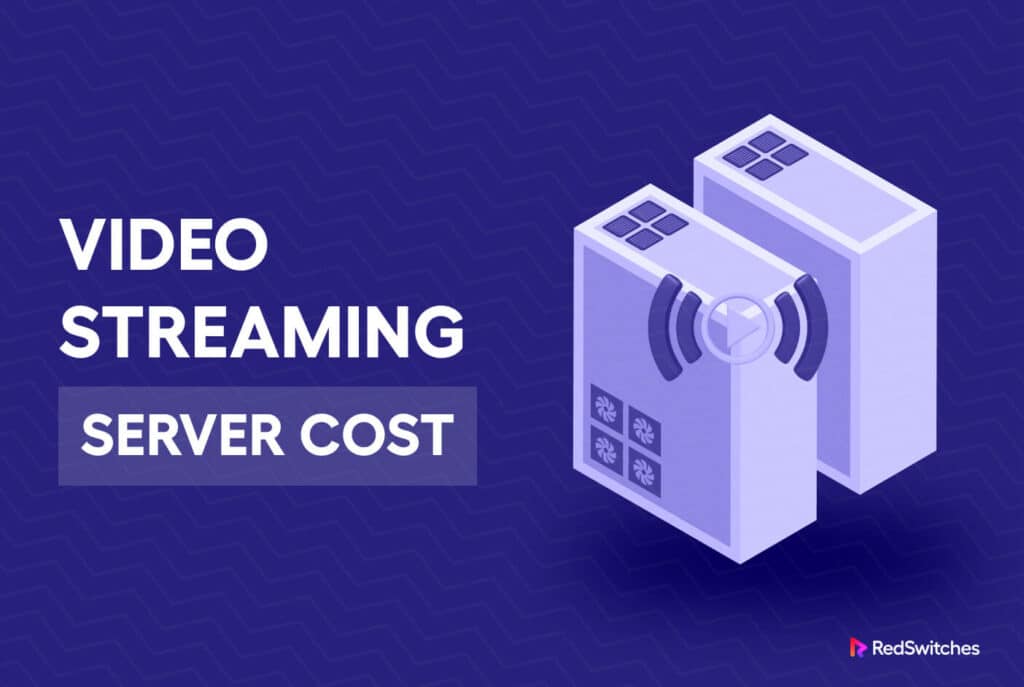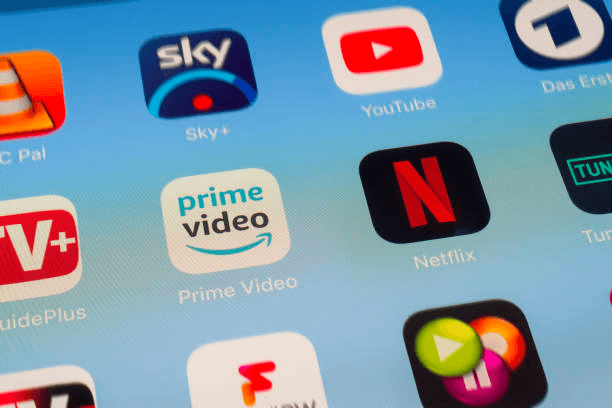In the rapidly evolving world of digital communication, video content is quickly asserting itself as a dominant force. According to a Cisco study, online videos will continue to make up more and more consumer internet traffic. This powerful medium touches all facets of our online engagement, from professional endeavors and academic pursuits to leisure activities. Yet, a fundamental feature often emerging in discussions of high-quality video content is the “video streaming server cost.”
This article sheds light on the multifaceted domain of streaming server cost. These costs, influenced by various factors, present a complex landscape that can sometimes be challenging to navigate. We will discuss the function of these servers, the components affecting their cost, and how to make knowledgeable financial decisions surrounding them.
Whether you’re a fledgling entrepreneur venturing into video content or an established organization seeking to optimize costs, this comprehensive guide promises to offer valuable insights. Join us as we delve into the intriguing world of your video streaming server cost.
Table of Content
- What is a Video Streaming Server?
- Factors Influencing Video Streaming Server Cost
- Estimating Your Video Streaming Server Price
- Estimating Your Video Streaming Server Cost
- RedSwitches as a Preferred Provider
- Why Choose RedSwitches for Affordable Video Streaming Servers
- Conclusion
- FAQs
What is a Video Streaming Server?
Navigating the digital communication landscape, one encounters the crucial role of a video streaming server. This essential technology is, in simple terms, a specific computer system designated to transmit video content via the Internet. Its responsibilities range from housing video files, converting them for streaming compatibility, and finally delivering them to the audience in an accessible format. Thus, it serves as a crucial conduit, linking content creators with their viewers.
a. Function of a Video Streaming Server
The video streaming server accomplishes operations to facilitate a flawless viewing journey. The initial stage involves receiving video data as live feeds from a camera or as pre-existing video files.
Once the input is obtained, the server preps it for streaming. This involves converting the video into a digital format, compressing it for efficient data transmission, and breaking it into manageable packets. The packetization of data eases its transmission over the Internet, contributing to a more enjoyable streaming experience.
In the final stage, the server transmits the video to the audience. It employs a stream method, allowing viewers to instantly engage with the video without downloading the entire file. By performing these operations proficiently, a video streaming server guarantees all its users a smooth, consistent viewing experience.
b. Types of Video Streaming Servers
The types of video streaming servers are varied, each catering to specific needs and budgets. Here, we explore three main types – on-premise servers, cloud-based servers, and hybrid servers.
i. On-Premise Servers
On-premise servers are physical servers located within a company’s premises. Key points to note about on-premise servers include:
- Control: They provide direct control over the hardware and software.
- Security: Excellent for businesses that prioritize security and data privacy.
- Cost: Higher upfront video streaming server cost due to hardware, software, and ongoing maintenance requirements.
ii. Cloud-Based Servers
Cloud-based servers are virtual servers provided by third-party service providers. Key aspects of cloud-based servers include:
- Flexibility: They offer resource allocation and scalability flexibility.
- Convenience: Eliminates the need for physical infrastructure.
- Cost: Lower upfront video streaming server cost but the potential for higher operational expenses in the long term.
iii. Hybrid Servers
Hybrid servers offer a mix of on-premise and cloud-based server features. Notable points about hybrid servers include:
- Balance: They balance control, security, and scalability.
- Flexibility: Allows for cost-effective scalability.
- Cost: Varied video streaming server costs, depending on the extent of on-premise and cloud-based resources used.
The following table provides a comparative overview of these types of servers:
| Server Type | Control | Security | Flexibility | Upfront Cost | Operational Cost |
| On-Premise | High | High | Low | High | High |
| Cloud-Based | Low | Variable | High | Low | Variable |
| Hybrid | Medium | High | High | Variable | Variable |
In summary, the choice of server type influences the overall video streaming server cost. Businesses must consider their specific needs, resource availability, and financial capacity before choosing a server type.
Credit: iStock
Factors Influencing Video Streaming Server Cost
Navigating the intricacies of your video streaming server cost involves understanding its multiple influencing factors. One of these critical factors is the selection of hardware and software.
a. Hardware and Software
When it comes to hardware and software, several aspects need consideration.
- Processing Power: A video streaming server needs substantial processing power. This power is essential for converting raw video input into a format suitable for streaming. Hence, a server with higher processing power will inevitably cost more.
- Storage Capacity: Videos take up a lot of space. Therefore, a server with a larger storage capacity can handle more videos simultaneously. However, more storage means a higher cost.
- Streaming Software: The choice of streaming software also impacts the overall video streaming server cost. Some software options come with a one-time purchase price, while others require a monthly subscription. Features, usability, and support also vary, affecting the overall value.
So, when estimating your video streaming server cost, consider these hardware and software factors carefully. It’s a balancing act between quality, capacity, and budget. Choosing components that meet your requirements and are also cost-effective is important.
b. Bandwidth
A key element affecting the streaming server cost is bandwidth. Simply put, bandwidth refers to the amount of data that can be transferred over an internet connection in a specific time frame. More viewers and higher-quality streams require more bandwidth.
- Number of Viewers: The higher the number of simultaneous viewers, the greater the bandwidth needed. More viewers mean more data transferred, leading to increased costs.
- Stream Quality: High-quality streams, like HD or 4K, require more data to deliver the same video length. Hence, higher quality equals higher bandwidth usage and, therefore, more cost.
Therefore, anticipating your audience size and the quality of streams they demand is essential in estimating bandwidth costs.
c. Maintenance and Updates
The management of a video streaming server extends beyond the initial setup. Ongoing maintenance, comprising several tasks, contributes to the server’s overall expense.
- Personnel Wages: Professional staff are crucial for the effective operation and upkeep of the server. Their remuneration forms a significant portion of the video streaming server cost.
- Energy and Cooling: Servers consume considerable energy, thereby increasing operational expenditures. Furthermore, server heat production requires cooling systems to maintain optimum functionality, leading to additional costs.
- Software Enhancements: Periodic enhancements to the streaming software are crucial to maintaining peak performance and compatibility and safeguarding against security threats. These enhancements may incur certain costs.
- Hardware Augmentations: The server’s hardware may require upgrades over time to cater to growing requirements or substitute obsolete components.
Note that maintenance and updates are pivotal in guaranteeing the lifespan and effectiveness of your video streaming server. However, these expenses require meticulous planning and budgeting.
d. Scalability
The capability to adapt is a pivotal aspect that impacts the video streaming server cost. As your viewer base expands, your server should be equipped to handle the surge without compromising the streaming quality.
- Expanding Capacity: With a growing viewer base, you might need to enhance your server’s capacity. This could involve augmenting storage, boosting processing power, or expanding bandwidth. Even though these upgrades add to the initial expense, they are indispensable for a seamless streaming experience.
- Reducing Capacity: There may be occasions when you don’t require all the resources at your disposal, like during non-peak hours. The capacity to temporarily scale down can help manage costs by sparing unnecessary resources.
- Dynamic Scaling: Certain streaming servers come with the feature of dynamic scaling. This enables servers to adjust resources depending on real-time demand, ensuring efficient resource usage and video streaming server cost management.
Remember that the ability to scale flexibly can help manage costs efficiently, equipping your server to meet demand while remaining within budget constraints.
Credit: iStock
Estimating Your Video Streaming Server Price
Determining your video streaming server cost isn’t an exact science due to varying factors, but you can make an informed estimate. Here’s an extensive guide to aid your calculations:
a. Understand Your Requirements
We’re about to dive deep into the nuts and bolts of your video streaming server needs. Several factors influence the price tag, from the level of detail in your videos to the scale of your audience. Let’s unpack them one by one.
- Video Quality: From standard definition (SD) to full high-definition (HD), 4K, or even 8K, the video quality affects your video streaming server cost. Higher-quality videos require more storage and bandwidth.
- Viewership Size: The number of people expected to stream the video concurrently influences your bandwidth requirement.
- Storage Capacity: The more content you have, the more storage you need. Consider both your current and future storage needs.
- Server type: Whether you choose on-premise, cloud-based, or hybrid, servers can significantly impact the overall cost.
By now, you should have a fair idea of your video streaming needs. With this understanding, we can move on to the next important aspect – hardware and software costs.
b. Hardware and Software Costs
Now, we’re hitting the core of your server – its power and storage and the software that drives it. These aspects directly impact your expenses. Let’s peel back the layers and explore.
- Processing Power: More powerful servers can handle more data and provide smoother streams but are more costly.
- Storage: Larger storage capacities increase video streaming server costs. However, not having enough storage can be detrimental to your operations.
- Streaming Software: Free, open-source software can lower costs, but premium software may offer better performance and features.
Great, we’ve walked through the hardware and software side of things. Next, we’ll venture into a significant cost driver – bandwidth. Buckle up!
c. Bandwidth Costs
Bandwidth is like the motorway for your videos – wider lanes allow more traffic. But more lanes can cost more. Let’s zoom in on how much this could set you back.
- Bandwidth Requirement: Use online calculators to estimate your bandwidth requirement based on video quality and expected viewership.
- Data Transfer Costs: Check the data transfer rates of different internet service providers. Costs per GB can vary widely.
After treading through bandwidth costs, it’s time to factor in the expenses of maintaining and keeping your server up-to-date. Ready to dive in?
d. Maintenance and Update Costs
Keeping your server in top shape isn’t a one-time thing. It’s a constant process. Staffing, electricity, cooling, and regular updates all add up. Let’s see how.
- Staffing: Calculate the cost of IT personnel to manage and troubleshoot the server.
- Electricity: Servers run 24/7 and can use significant electricity. Factor in these costs.
- Cooling: Servers generate heat. If you’re using on-premise servers, cooling costs can add up.
- Software Updates: Regular updates are necessary for smooth operations and security. Depending on your chosen software, these can be free or carry a cost.
Maintenance costs are key, but there’s one more thing to consider: the future. Let’s examine how scalability could affect your budget.
e. Scalability Costs
Are you thinking about growing your streaming service in the future? Then scalability is a crucial factor to consider. Let’s delve into the costs you might incur as you expand.
- Upfront Costs: Consider if you can afford to invest in more capacity than you currently need to save on future upgrade costs.
- Flexibility: Some server providers charge for service changes. Others allow you to scale your service up or down with minimal or no extra fees.
Whew! That was quite a ride. Now, you should have a solid idea of the various video streaming server costs. Remember, it’s not about finding the cheapest option but the one that best suits your needs. Armed with this information, you’re ready to take the next step, which you’ll discover as you continue scrolling down. Let’s keep the momentum going!
Credit: iStock
Estimating Your Video Streaming Server Cost
When choosing a server provider, it’s essential to consider different aspects of their services. Here is a sample table to guide you on what to look out for:
| Factors to Consider | Explanation |
| Base Cost | The initial cost of acquiring the server |
| Included Bandwidth | The amount of data transfer is included in the base cost. |
| Cost per Extra GB | The additional cost for each GB of data transfer beyond the included bandwidth. |
| Maintenance & Update Fees | The recurring cost for maintaining and updating the server |
| Scalability | The provider’s ability to adapt to your changing needs |
| Special Features | Any unique selling points or services that set the provider apart. |
This guide should help you develop a rough estimate of your video streaming server cost. However, remember that actual costs may vary depending on your unique situation and market fluctuations.
RedSwitches as a Preferred Provider
Having looked at the factors to consider, let’s see how RedSwitches fares:
| Server Provider | Base Cost | Included Bandwidth | Cost per Extra GB | Maintenance & Update Fees | Scalability | Special Features |
| RedSwitches | $$ | X+ GB | $ per GB | $ | Included | Specializes in Bare-Metal, and Dedicated Servers |
RedSwitches offers excellent value with a lower base cost, inclusive bandwidth, and affordable maintenance fees. Our servers scale according to your needs without a lot of extra charges. Specializing in Bare-Metal and Dedicated Servers, we provide robust and reliable solutions.
For a detailed breakdown of our extensive range of offerings, click here.
Why Choose RedSwitches for Affordable Video Streaming Servers
The choice of a server provider is pivotal. It impacts both your budget and your streaming service’s quality. RedSwitches, dedicated to affordability and superior quality, is a trustworthy choice.
- Cost-Effective Services: RedSwitches offers affordable server solutions. We comprehend the crucial balance between performance and cost, aligning our services to meet these needs.
- Exceptional Quality Streams: Video streaming requires seamless delivery. RedSwitches guarantees this through high-end servers. We focus on delivering continuous, interruption-free service.
- Adaptable Solutions: The scalability offered by RedSwitches stands out. We provide flexible options whether you need to scale up or down. This allows efficient cost management and meets escalating demand.
- Dependable Support: Server problems can interrupt service. RedSwitches assures constant support to reduce downtime. This aspect ensures your streams operate smoothly, regardless of the hour or day.
- Cutting-Edge Technology: RedSwitches employs innovative technology. This dedication to advanced solutions improves your streaming quality and service dependability.
- All-Inclusive Packages: The server packages from RedSwitches are comprehensive. We encompass setup, upkeep, and support. This method helps you evade unexpected video streaming server costs.
To summarize, RedSwitches offers an impressive blend of price, quality, and service. This qualifies us as suitable for firms seeking economical and dependable video streaming servers.
Conclusion: Making a Cost-Effective Choice
Comprehending and controlling your video streaming server cost is crucial. It affects your streaming service’s quality and your financial results. Thus, your server provider selection is an important decision to make.
RedSwitches emerges as a noteworthy name in this context. We specialize in delivering Bare-Metal Servers and Dedicated Server solutions. These servers provide outstanding performance and are cost-effective. With RedSwitches, you acquire a reliable ally that understands your requirements. We deliver scalable, high-quality, and customizable solutions at reasonable prices,
In conclusion, understanding the terrain of your video streaming server cost can be easy with Red Switches. You can attain optimal cost efficiency with the correct information and a dependable partner like RedSwitches. Your journey towards a superior and reasonably priced streaming service begins with comprehending these costs and making an informed decision.
FAQs
Q-1) How much does it cost to stream videos?
Streaming video costs depend on several factors. These include the video quality and length, the platform you’re using, and your internet service plan. Higher quality, longer videos, and premium platforms tend to increase costs.
Q-2) How much does it cost to host a live stream?
The cost of hosting a livestream fluctuates based on various elements. The platform you choose, your audience size, and your equipment and production costs all come into play. Some platforms offer free services with limitations, while premium services can cost hundreds per month.
Q-3) How do I create a streaming video server?
Building a streaming video server involves a process. First, you select a server, which can be physical or cloud-based. Next, you install suitable streaming software like Wowza Streaming Engine. Then, you configure your server settings, including firewall rules and port forwarding. Finally, conduct a test stream to ensure all is working well.
Q-4) How do I set up a private streaming server?
Setting up a private streaming server entails a few steps. Like a public server, you select a server and install streaming software. You then establish user authentication to restrict access to approved viewers only. Also, configure privacy settings to ensure your stream isn’t public. Run a test to confirm everything is set up correctly.
Q-5) How to make a VLC streaming server?
Establishing a VLC streaming server includes several steps. After installing VLC Media Player on your server, you open the “Media” menu and select “Stream”. Add the files you plan to stream and click “Stream”. Then choose “New Destination”, select “HTTP” and set your port. Choose your encapsulation method and click “Stream”. Lastly, test your setup by accessing your stream from another device.




